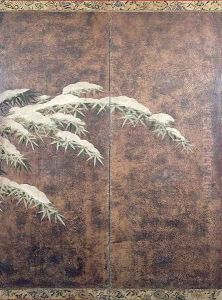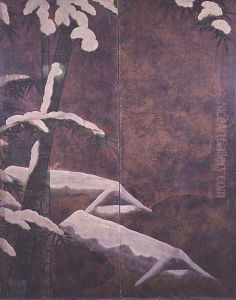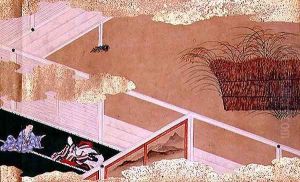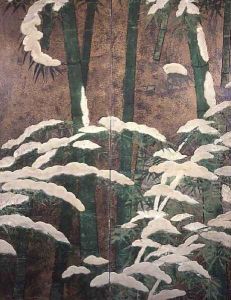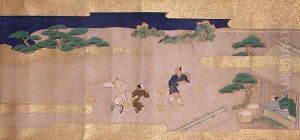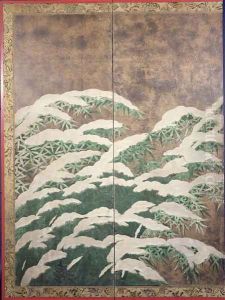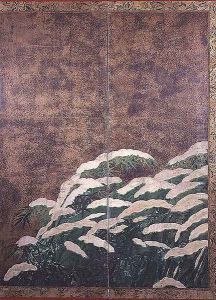Mitsuyoshi (Gyobu) (Kyuyoku) Tosa Paintings
Mitsuyoshi, commonly known by the art names Gyobu and Kyuyoku, was a prominent Japanese painter from the Tosa school, born in 1539 and passed away in 1613. The Tosa school, known for its refined and detailed narrative painting style, primarily focused on themes from Japanese literature and history, particularly emphasizing subjects such as the classical Heian period literature and the lives of the nobility. Mitsuyoshi played a significant role in the development and perpetuation of this tradition during a period of significant transformation in Japan, encompassing the late Muromachi to the early Edo periods.
Mitsuyoshi was born into the Tosa family, a lineage with a long-established connection to the courtly arts, serving the Imperial family and aristocracy with their unique painting style. This style was characterized by its delicate and intricate brushwork, vivid use of color, and a profound attention to detail, elements that Mitsuyoshi mastered and possibly innovated upon during his lifetime. His work often depicted scenes from The Tale of Genji and other classical literature, blending narrative storytelling with visual splendor.
During Mitsuyoshi's lifetime, Japan underwent profound changes, transitioning from the age of warring states (Sengoku period) to a more unified and stable society under the Tokugawa shogunate. This period also saw the emergence of new art patrons from the samurai class and wealthy merchants, alongside the traditional aristocracy. Mitsuyoshi's ability to adapt his style to cater to the evolving tastes of these diverse patrons while maintaining the essence of the Tosa school's tradition is a testament to his skill and versatility as an artist.
Despite the rich legacy of the Tosa school, detailed records of individual artists like Mitsuyoshi are relatively scarce, with much of what is known about them pieced together from artworks, contemporary diaries, and court records. Mitsuyoshi's contributions to Japanese art, however, are undeniably significant, as he not only continued the traditions of the Tosa school but also contributed to the cultural heritage of Japan, leaving a lasting impact on the development of Japanese painting.
